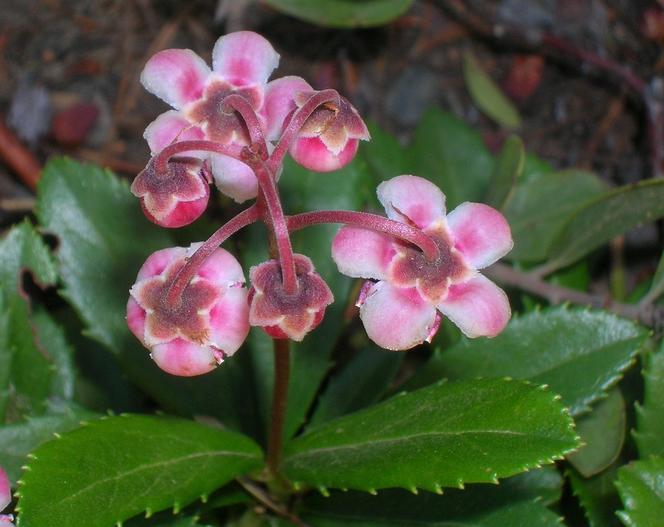Prince’s Pine
(Chimaphila umbellata)
Prince’s Pine (Chimaphila umbellata)
/
/

brewbooks
CC BY-SA 2.0


















































































Estimated Native Range
Summary
Prince’s Pine is valued for its ornamental foliage and delicate flowers, making it suitable for woodland gardens and shaded rockeries. It is also used as a flavoring in candy and soft drinks, particularly root beer. This subshrub is low-maintenance, requiring minimal water once established and thriving in well-drained, acidic soils. It prefers partial to full shade, mimicking its natural understory habitat. While it is not commonly afflicted by diseases, its slow growth rate and difficulty in propagation can be challenging for gardeners. It is not known to be invasive and does not have aggressive roots, but it can be sensitive to soil disturbance and changes in light conditions.CC BY-SA 4.0
Plant Description
- Plant Type: Subshrub
- Height: 0.5-1 feet
- Width: 1.5-2 feet
- Growth Rate: Slow
- Flower Color: White
- Flowering Season: Spring
- Leaf Retention: Evergreen
Growth Requirements
- Sun: Part Shade
- Water: Low
- Drainage: Fast, Medium
Common Uses
Bee Garden, Bird Garden, Butterfly Garden, Edible*Disclaimer: Easyscape's listed plant edibility is for informational use. Always verify the safety and proper identification of any plant before consumption., Fragrant, Hummingbird Garden, Low Maintenance
Natural Habitat
native to coniferous and mixed forests, often found in dry, acidic soils under the canopy of pine and oak trees across the Northern Hemisphere to Guatemala
Other Names
Common Names: Umbellate Wintergreen, Pipsissewa, Common Pipsissewa, Common Prince’s Pine, Prince’s-Pine, Skærm-Vintergrøn, Dolden-Winterlieb, Sarjatalvikki, Chimaphile À Ombelles, Herbe À Clef
Scientific Names: , Chimaphila umbellata, Chimaphila umbellata f. americana,
GBIF Accepted Name: Chimaphila umbellata (L.) W.P.C.Barton